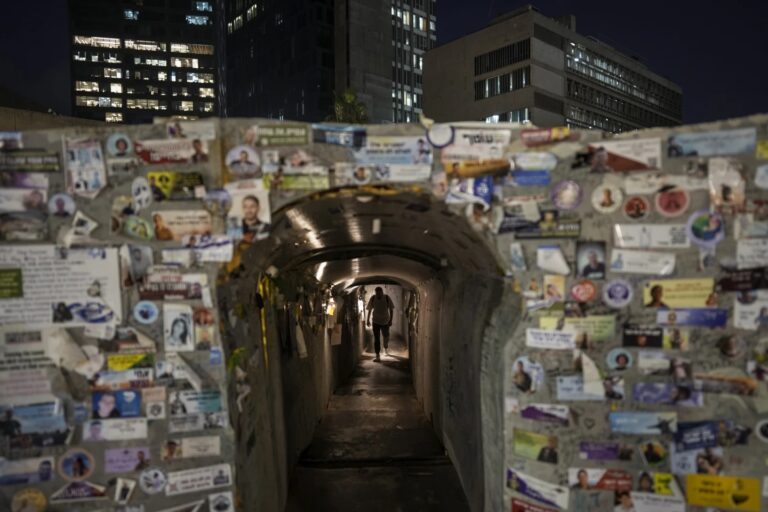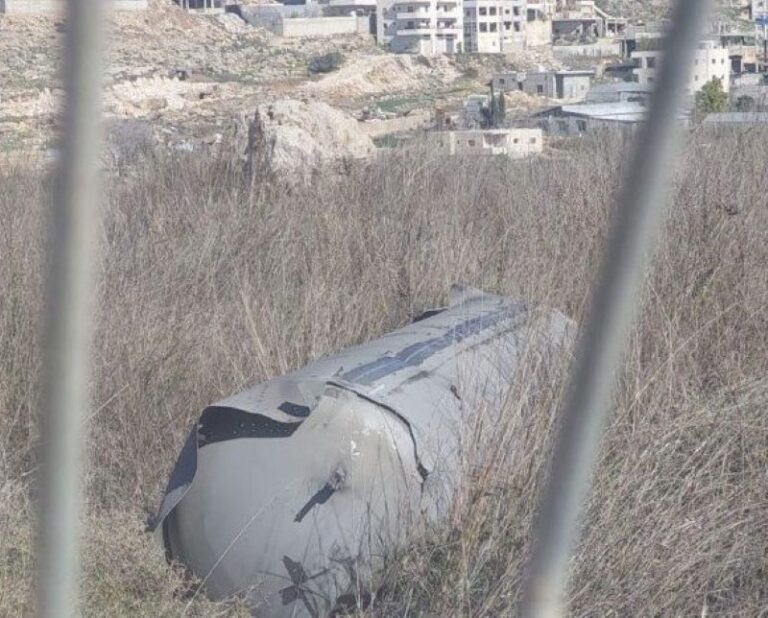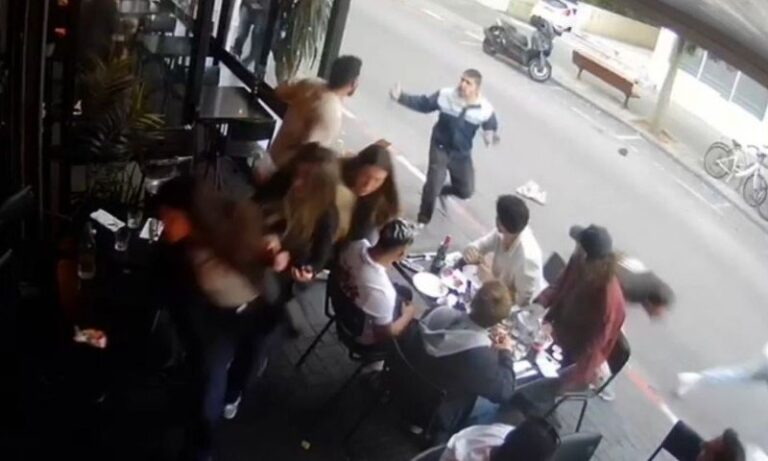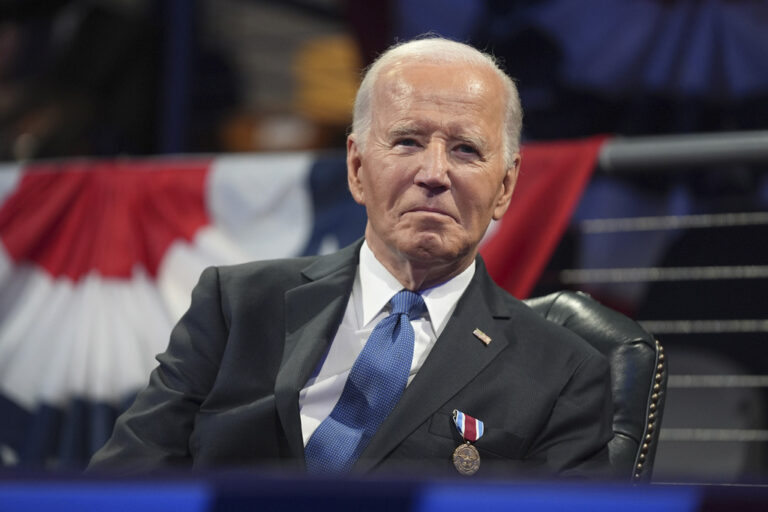 Thank you for those kind words Valerie, and for your outstanding leadership of the Police Foundation in these challenging times.
Thank you for those kind words Valerie, and for your outstanding leadership of the Police Foundation in these challenging times.
The year 2012 will be remembered for an epic storm, a presidential election and the drama of the fiscal cliff. It will also go down in history as the year New York City recorded the fewest homicides since Senator John F. Kennedy announced his run for the presidency in 1960. Today, I want to discuss how our police officers accomplished this while defending the city from two additional terrorist plots. Before I do that, I want to take a moment to acknowledge their tremendous response to Hurricane Sandy and the support they received from the Police Foundation.
This was an unprecedented event that wreaked havoc across the five boroughs. Forty-three New Yorkers died. The city absorbed nearly $40 billion in damages. Those affected included nearly 2,000 members of the police department. Despite suffering catastrophic damage to their own homes and property, they continued to report for duty and help others. They carried out thousands of rescues by land, sea and air. Rescues were complicated by tons of debris in the water, flattening the tires of a number of vehicles and clogging outdoor engines on rescue boats in some instances. The department also had to cope with flooding at many facilities, with three of our station houses taken out of service in the 60th and 100th precincts and PSA 1 in our Housing Bureau.
NYPD community affairs officers and school safety personnel provided security at 65 city-operated shelters where 6500 residents were placed. Most of these shelters were in schools. They also collected and distributed nearly 300 van loads of food, clothing, and cleaning supplies to affected neighborhoods.
Police officers and traffic enforcement agents worked long hours at busy intersections to ensure the safety of drivers and pedestrians in areas hardest hit by power outages. They kept order in gas lines and enforced HOV restrictions. We mobilized every recruit from the Police Academy to help direct traffic in lower Manhattan. In addition, scores of retired officers were activated through our Retiree Mobilization Plan to help staff and secure FEMA distribution sites. On November 15th, President Obama visited Staten Island to tour damaged neighborhoods where he consoled residents and offered encouragement to our officers.
In Sandy’s aftermath, we surveyed every precinct, transit district, and housing command to identify our members who were badly hit. We set up Family Assistance Centers in department facilities in Brooklyn, Queens, and Staten Island. There, active and retired members of the service could obtain clothing and supplies and learn how to apply for further assistance. We also provided transfers for many officers to commands closer to their homes. Through the Police Foundation, we hired an expert in the FEMA claims process to guide our members in obtaining help from the federal government.
In November, also with the help of the Police Foundation, we transformed our headquarters auditorium into a hurricane relief grant center for an entire week. Thanks to the incredible generosity of the Howard Milstein Foundation and Emigrant Savings, and the Christy and John Mack Foundation, we were able to distribute more than $2 million dollars among thousands of affected officers and civilians Let me take this opportunity to thank the representatives of the Milstein Foundation here today and John and Christy Mack for your amazing demonstration of support. Thank you.
Our goal in doing all of these things was to be there for our officers, as they were there for the city when Sandy hit and in the days and weeks that followed. It’s a credit to their efforts that overall crime fell in the weeks after the hurricane by nearly 7% compared to the prior year. It’s also worth noting that there were no homicides in New York City for an entire week after the storm. The city was already on pace to see a record low in murders in 2012. And as I said, we ended the year with the fewest homicides in more than half a century.
This morning I’ll discuss the proactive policing strategies that have made this possible and allowed us to protect the city from another terrorist attack. I’m also going to highlight the ways we’re leveraging new technology to keep the city safe. Finally, I’ll give you a sense of how the Police Department is laying the groundwork for the city’s security well into the future through our NYPD 2020 initiative.
New York City has by far the lowest murder rate of any big city in America. We have 5 murders for every 100,000 people. Compare that to Detroit with 54 murders for every 100,000 people, Philadelphia, with 22 and Chicago with 19. If we had Detroit’s murder rate, instead of experiencing just over 400 murders last year, New York City would have experienced 4,400.
And the reductions aren’t just limited to murders. Across the board, our police officers have achieved remarkable gains. Overall crime is down by 32% from where it was in 2001. Robberies are down by 28%. Burglaries by 42%. And auto theft by 73%. This has been accomplished despite 6000 fewer officers in our ranks than we had eleven years ago, and an increase in the city’s population of nearly 200,000 people.
One of the key reasons fewer New Yorkers are being killed is because shootings and shooting victims are down to their lowest levels in twenty years. When we recognized that 96% of the individuals who were shot and 90% of those murdered were concentrated in minority neighborhoods, we flooded those areas that had experienced spikes in crime and we stopped suspicious individuals there. Since 2002, with the help of these strategies, we’ve taken approximately 8000 weapons annually off the street, 800 of them illegal handguns. We’re preventing crimes before someone is killed. The result? Compare Mayor Bloomberg’s 11 years in office, with the 11 years before that, and you’ll find that there were 7,364 fewer murders. That’s 7,364 lives saved. And if history is a guide, they are largely the lives of young men of color.
The reduction in violent crime has produced a “peace dividend,” if you will. Far fewer New York City residents are being sentenced to state prison as a result, bucking a national trend. As the city’s crime rate has plummeted since 1990, so has the share of its admissions to state prisons, by 69%. This has broad societal benefits, including the fact that it saves government about $2 billion a year.
From the start of his administration, the Mayor has been a powerful and persistent voice on the need to implement a sensible national gun control policy. Long before the tragedy at Newtown, he was an outspoken leader on this issue. Certainly, the plan put forth by the White House last week to close the gun show loophole by mandating universal background checks is welcome news. Mayor Bloomberg has been calling for this for a long time. Likewise, the proposal to reinstitute the assault weapons ban is a major step in the right direction. However, our biggest concern in New York City is not assault weapons but illegal, concealable handguns, 90% of which arrive here along the I-95 corridor from southern states – the so-called “Iron Pipeline.” They’re used in approximately 65% of the murders committed in New York City. Neither the White House plan nor New York’s own tough gun laws, which we’d like to see implemented everywhere, will shut off the Iron pipeline anytime soon. But again, the President’s plan – especially universal background checks — represents significant progress and we hope the Congress will make it law.
Regrettably, our efforts to combat gun violence and other crimes in apartment buildings in poor neighborhoods by arresting trespassers there could be hindered by a recent court decision designed to hamstring our officers. Under a city program called Operation Clean Halls, landlords in low-income, private apartment buildings can voluntarily sign up to receive an extra level of protection from the police for residents. Some take for granted the safety provided by doormen who routinely challenge visitors to their apartment buildings. Through Operation “Clean Halls,” the police have worked to provide a modicum of safety for less prosperous tenants. It was a judicial setback, but I trust a temporary one, because the city is appealing. We believe the court is wrong on the facts and wrong on the law.
We strive to provide the same degree of protection to residents of New York’s 334 public housing developments. These buildings house 5% of the population yet they generate 20% of the city’s crime. Since 2002, the dedicated officers of our housing bureau have driven crime down in these developments by 54%. We employ a range of tactics to achieve this, everything from vertical patrols of stairwells, where much criminal activity takes place, to monitoring a network of more than 6000 cameras installed in elevators and lobbies. We also stop and question individuals who act suspiciously. I want to show you briefly why we do all of these things and more to safeguard law-abiding citizens.
You’re about to view clips of crimes in public housing captured by our network of VIPER cameras spread throughout developments. They’re monitored around the clock by a team of 200 officers. When they see a crime or suspicious activity taking place, they direct those police officers closest to the scene to respond immediately. I want to advise you that some of the footage you’re about to see is graphic. Please roll the video.
I’m happy to report that, in nearly all of the cases you saw, an arrest was made in part because of the video evidence, including the two men who brutalized small dogs.
In a number of the incidents you just watched, the offenders were not residents of the buildings they were in, and had no business whatsoever being there. They took advantage of an open door or an unsuspecting tenant to gain access and commit a crime. Every day, police officers challenge such individuals in housing developments across the city, preventing untold crimes. And they often confront danger in doing so. Last July, a police officer assigned to our Housing Bureau was shot in the chest while conducting a vertical patrol in a stairwell in a Lower East Side Housing development after he came upon a man with a gun. His life was saved by his bullet resistant vest.
We’re also determined to make life safer and better for residents of housing developments through an initiative we launched in October called Operation Crew Cut. An analysis we conducted last year determined that 30 percent of shootings in New York City can be traced to so-called “crews.” These are loosely affiliated gangs, mainly composed of young teens, who are responsible for much of the violence in and around public housing and elsewhere. Their loyalty is to their friends living in a relatively small area and their rivalries are based not on narcotics trafficking or some other entrepreneurial interest, but simply on local turf.
This kind of tit-for-tat brutality among teens was settled in neighborhoods generations ago by fist fights. Now, more often than not, it’s with guns. Social media is another new ingredient, often used to add fuel to the fire. For example, one gang member will post a photograph of himself in front of a rival’s apartment building or post surveillance photographs of rivals who they threatened to kill next. Members also used social media to intimidate informants or to display pictures of valuables taken from their rivals. By the way, the letters “MMG” you see in this picture that was posted on-line by a crew stands for the “Murder Moore Gangstas,” as in the Moore Houses in the Bronx. Members terrorized residents there. They trafficked in weapons and drugs before being taken down by the NYPD and agents from the Bureau of Alcohol, Tobacco, and Firearms last June.
Under Operation Crew Cut, we’re in the process of doubling the size of our Gang Division from approximately 150 detectives to 300 phased in over a period of time. We’ve also assigned lawyers from the Department’s Legal Bureau to each of our seven Borough Gang Division Units to coordinate arrest and prosecution with the five district attorneys in New York City. The most affected precincts in the city have teams of a dozen uniformed and plainclothes officers to specifically address street conditions caused by rivalries between crews. Our Juvenile Justice Division is the clearinghouse to support social media-driven investigations. In addition to tracking the admissions of criminal conduct and plans to commit crimes by crew members on Facebook, You Tube and elsewhere, the division is responsible for maintaining a dictionary of sorts with continually updated lexicon employed by crews as a kind of code. We think there’s a real opportunity here to save more lives and perhaps rehabilitate some of these young crew members by having our youth officers visit them at home, and provide the kind of tough love that offers the choice between supportive programs or re-arrest.
That’s also the goal of our Juvenile Robbery Intervention Program, or J-RIP. You’re looking at a photo from one of our recent holiday parties with participants and their families. Three years ago, when we examined robbery patterns within one housing bureau command in Brooklyn, we determined that many of the young people being arrested were repeat offenders. In response we launched JRIP. Our youth officers now visit an offender’s home, explain the seriousness of the charges to the youth and his or her parents. They also offer referrals to social service agencies and conduct follow-up visits with families. The goal is to reduce the recidivism rate and steer these young people toward a more productive path. And it’s worked.
When we began this program, the individuals chosen to participate had committed a total of 106 robberies. One year later, we recorded only 20 robberies among this group. Given this result, we began to implement the program across the city. The feedback I hear from parents is incredibly positive. A number of them I’ve spoken to have told me that it literally saved their children.
Teens engaged in violence against one another also target other teens for thefts, particularly if an Apple product is involved, and very often on the subway on the way home from school. Like the impact on the economy itself, the allure of Apple devices has affected New York City’s crime rate. And surprisingly so. In 2002, we recorded a total of 75 thefts of Apple products in all of New York City. Last year that number was approximately 16,000. The increase in the theft of Apple devices in 2012 exceeded the increase for overall crime in New York City. In the absence of the increase in Apple thefts alone, we would have experienced a decline.
Last September, we sent police officers to 21 stores in New York City where the iPhone 5 was making its debut. They were there to register serial numbers and contact information in case the devices were stolen. Recently, we compiled a list of 270 stores where iPhones are sold in large volumes. Between now and April we plan to visit all of them and register as many devices as we can. This is part of a comprehensive strategy we’ve put in place that also includes: concentrating officers in the transit system where many thefts take place; conducting decoy operations; with the help of Senator Chuck Schumer, enlisting cell phone carriers to permanently disable a phone once it’s been stolen; and getting owners to activate the “find my iPhone” application, which allows us to pinpoint the locations of unsuspecting thieves. We also have a team of 12 officers under our Deputy Commissioner of Operations who follow-up on subpoenas issued on stolen phones. We’ve tracked down and recovered a number of phones overseas in an effort to understand how this criminal enterprise works.
Proactive policing has also helped to keep New York City safe from 16 terrorist plots since nine-eleven. They’ve targeted everything from bridges, tunnels, and subways to returning U.S. troops and airports. They include two conspiracies revealed just a few months ago.
On October 17th, Quazi Mohammad Nafis, a 21-year-old native of Bangladesh who’d written of his desire to “destroy America,” parked a van packed with what he believed to be 1,000 pounds of explosives outside the Federal Reserve Building in lower Manhattan. He then tried to detonate it remotely from a nearby hotel. The bomb was not operational and Nafis was never an imminent threat because police officers and FBI agents working together through our Joint Terrorist Task Force were monitoring him and interacting with him every step of the way. Then, in November, two Pakistani-born brothers, Raees Alam Qazi and Sheheryar Alam Qazi, were arrested by federal authorities in Florida on charges relating to a plan to bomb popular New York City locations including Times Square, Wall Street, and movie theaters.
These cases offer further evidence of what we’re up against: terrorists who make no apologies for trying to kill as many New Yorkers as possible to avenge what they perceive as American responsibility for Muslim deaths abroad. The only way to stop such individuals is through intelligence gathering. That’s why it’s essential that the police department’s efforts to defend against terrorism be proactive and that we find those who are in the earliest stages of planning violent acts.
Increasingly, we see that young men who have become radicalized in the United States travel to battle fronts in Afghanistan, Pakistan, Kashmir, Kosovo, Somalia and Yemen. There, they attend terrorist camps and receive further indoctrination. Some take part in combat operations against U.S. troops. Others are directed home to gather intelligence and carry out attacks. American recruits are especially prized. Their passport is the all-access pass that allows them to travel without scrutiny and enables Al Qaeda to get close to its most coveted targets. We’ve seen this scenario play out in several plots against New York City, including the plan by Najibullah Zazi and two associates to carry out a suicide operation against New York City subways in 2009, and the plot by Faisal Shahzad to detonate a car bomb in Times Square a year later.
Also in 2010, we arrested two homegrown terrorists from New Jersey at JFK airport as they were preparing to board flights to Egypt. From there they planned to travel to Somalia to join the terrorist group al Shabbab, in order to fight U.S. troops. We knew exactly what they intended to do thanks to the work of an NYPD undercover officer who made contact with the men in 2009 and became a trusted confidante.
With civil war in Syria, the activities of militant Islamists in Mali and Algeria, and persistent tensions in Israel, we’re also mindful of the potential for sympathizers here in the U.S. to take action against this country. We keep a close eye on events overseas with the help of our Foundation-funded network of liaisons in eleven foreign cities, and a corps of civilian analysts trained in military and foreign affairs.
I’ve just described the proactive strategies we’ve put in place to combat conventional crime and terror. Now, I’d like to discuss how we’re utilizing technology to support these efforts. In 2002, we launched a thorough review of our technology infrastructure. We commissioned IBM and Deloitte Touche to study the department’s technology needs. From the study, the department was able to identify these needs and address them. We overhauled our computer network, making it 25 times faster and vastly more secure. We installed more than 16,000 new desktop stations at 285 Buildings across the city. Thanks to an unprecedented, $5 million gift from J.P. Morgan Chase to the Police Foundation’s technology campaign, we can continue to move forward with an ambitious program of modernization. I especially want to thank the Chairman of J.P. Morgan Chase, Jamie Dimon, and Chief Operating Officer Frank Bisignano, for this outstanding example of partnership that we hope will serve as a model for others.
We now have nearly 3500 cameras in our Lower and Midtown Manhattan Security Initiative operated by the private sector and the NYPD. They’re networked together so that from our downtown coordination center we can view live and recorded footage from any of them. Using special software, we can quickly sift through the massive amount of data we receive and flag items of concern. If a bag is left unattended or a car is driving against the flow of traffic in view of one of our cameras, the software uses an algorithm to recognize the pattern and sends us an alert.
Thanks to the Department of Homeland Security, our Lower and Midtown Manhattan network also includes 2,600 radiation detectors that have been distributed to officers on patrol. And 300 fixed and mobile license plate readers at toll plazas and on patrol cars throughout the city. Through a unique partnership with Microsoft, we’ve linked all of these tools together to form the Domain Awareness System. This is proprietary technology, developed by police officers for police officers with the help of Microsoft experts. It allows us to layer data from multiple sources on a single dashboard, giving us a comprehensive view of potential threats and criminal activity.
You’re watching a test in which one of our officers moves into the field of vision of the camera and drops a large bag. When the bag is left alone for a set period of time, the system highlights it on screen and alerts officers in our Lower Manhattan Security Coordination Center. We can then dispatch the nearest officers to investigate or clear the area. We have the ability to call up every camera within 500 feet of the package, go back in time, and see who might have left it there.
We can also search the network using specific criteria, say, a description of a man wearing a yellow jacket in lower Manhattan. We enter those facts and immediately receive images from several different cameras going back 30 days. We can choose the image that best fits the description and instantly view all of the recorded video associated with it.
We can do all of this and much more, all from a desktop. This capacity doesn’t exist anywhere else in law enforcement.
In addition to the obvious benefits to our police officers, in a “first of its kind” agreement, Microsoft has consented to pay New York City 30 percent of its gross revenues on the sale of the system to customers worldwide. These funds will be used to support other cutting-edge crime-prevention and counter-terrorism programs.
Last year I discussed a promising new tool capable of detecting concealed firearms. The device reads a specific form of natural energy emitted by people and objects known as terahertz. If something is obstructing the flow of that radiation, for example a weapon, the device will highlight that object. Over the past twelve months, we’ve been working with the vendor and the London Metropolitan Police to develop a tool that meets our requirements. We took delivery of it last week. One of our requirements was that the technology must be portable, and in this slide you can see that we’re able to mount it in a truck. These images are from a recent test we conducted with an officer carrying a hidden handgun. You get a sense of why we’re so hopeful about this tool. We still have a number of trials to run before we can determine how best to deploy this technology. But we’re very pleased with the progress we’ve made over the past year.
We’re also turning to technology to strengthen the administration of justice. Last fall the NYPD announced a decision to video record interrogations conducted by our detectives in cases of felony assaults, sex crimes and murder. After running a pilot program in five precincts, we found that the system was not only manageable logistically but that the performance of our detectives was such that we expect there will be little if no downside for the prosecution. While some may fear this videotaping “how the sausage is made” – so to speak — during interrogations might negatively influence juries, our experience suggests otherwise. None of the 300 cases in our pilot resulted in the defense opting for a jury trial. In fact, they were often eager to enter a plea once they saw the video recording of the interrogation. In only one case did the defense counsel claim the defendant was unlawfully intimidated in the interrogation and move to have the confession quashed. The judge was able to view the interrogation because it had been recorded and he ruled in our favor.
This is not an easy undertaking for an organization as large as the NYPD. Some of our buildings are more than 100 years old. There are a lot of complicated logistics involved. Rooms must be sound-proofed, acoustically friendly, well-lit; and secure. But we’re committed to doing it with the help of the Police Foundation, which has launched a $3 million campaign to fund this initiative. More than $1 million of that has already been raised, allowing us to equip 23 commands across the city. With additional funding from the Foundation we’ll complete 38 more giving us 61 commands in total.
You’ve gotten a glimpse of some of the technology we’re relying on. The final issue I want to touch on has to do with the long term future of the department as it relates to both crime-fighting and counterterrorism. Last April we embarked upon an ambitious, foundation-funded project to determine how best to prepare the police department for the challenges of the next decade and beyond. We selected as our facilitators for this initiative McKinsey and company, the world’s leading management consulting firm. McKinsey’s job was to help us examine where we are now as a department and where we need to be in 2020. We chose 50 of the department’s civilian and uniformed leaders to work with McKinsey consultants. We divided them into three working groups made up of eleven initiative teams. Their goal was to establish a baseline of objectives in three key areas: first, keeping the city safe. Second, developing talent. And third, improving collaboration both internally between the department’s many bureaus and units and externally, between the police and the community.
With McKinsey’s role now completed, the follow-through on these and other recommendations is in the hands of the NYPD 2020 project management office which is led by a deputy chief, supported by an agency attorney, a captain and a lieutenant, a civilian analyst, and a police officer.
The PMO, as it is known, will lead the way on implementing the plans developed by our initiative teams with assistance from team members, executive staff and other high level managers who have an interest in the final outcomes. We’re also working on a final report detailing our findings and recommendations for public release.
I’ve just given you an overview of our strategies, technology, and vision. These efforts were supported at every step of the way by the Police Foundation. New York City would not be what it is today without the contributions of informed and engaged citizens like the people gathered here today. The results show not only in record reductions in crime and a city made safer from terrorism, but also in the public’s estimation of our police officers. A poll released last week by Quinnipiac University shows that 70% of New Yorkers surveyed approve of the job police are doing, the highest level of public approval they’ve received since the months after nine-eleven. With your help, we’ll see to it that the foundation of security we’ve laid in New York stays strong. With your help, we’ll ensure that this remains the safest, greatest city in the world, through 2020 and beyond. Thank you for all you do. Please keep up your support for the New York City Police Foundation and the NYPD.
(YWN Desk – NYC)










